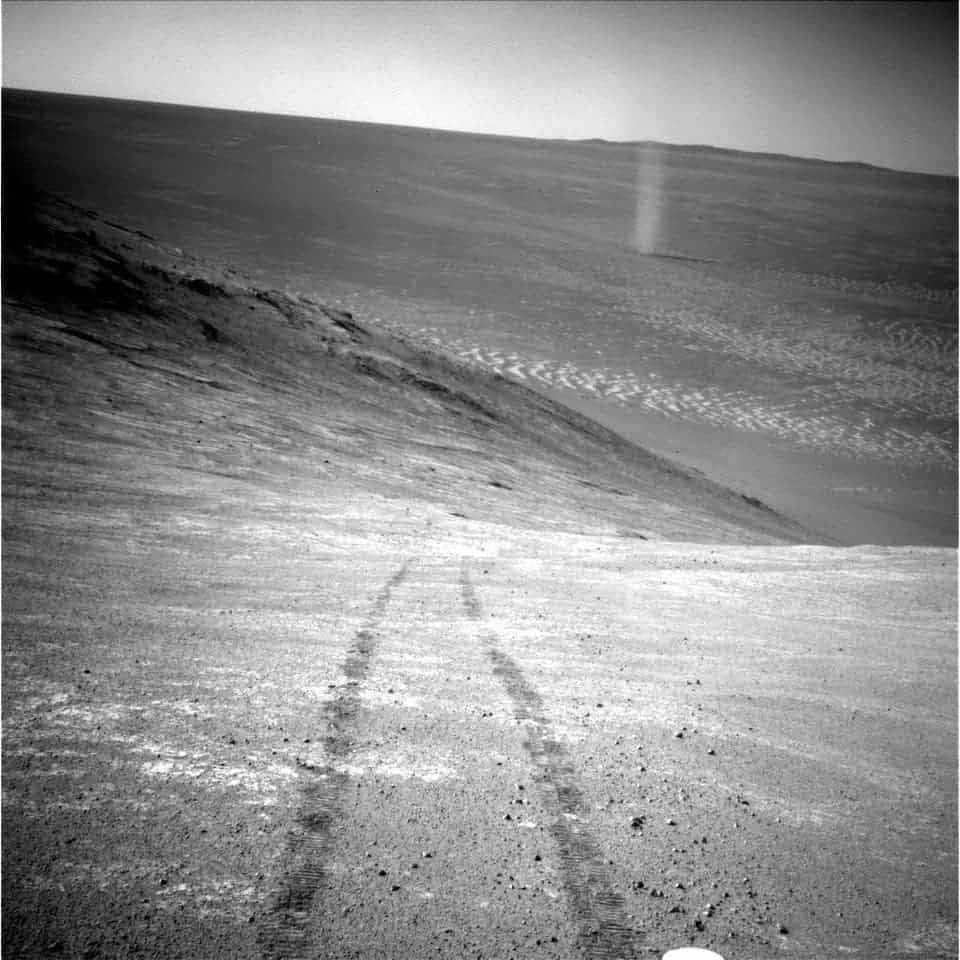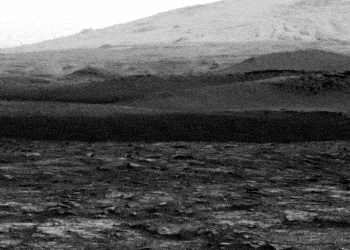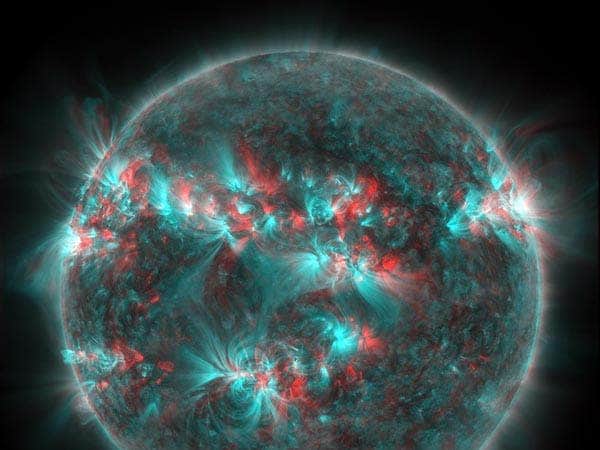NASA’s Opportunity rover beamed back this amazing photographed showing a dust devil swirling over the Martian surface. “This is one of the best dust devils that we have seen in Meridiani Planum,” said Ray Arvidson who’s Opportunity’s deputy principal investigator.

Scientists say dust devils on Mars form under the same conditions as in Arizona’s desert, for instance. These rotating columns of air pick up dust and debris typically on clear summer days when the ground is very hot. These form when there’s a contrast in heating among surrounding objects. The hotter part of the ground heats the air above it. This air is hotter than the surrounding air so rises, punching through the cooler air above and creating a vertical column of warm, rising air. If a gust comes along, the arrangement is blown on its side.
On Earth, dust devils are pretty small ranging in height from 10 to 100 feet. In 2012, NASA caught an amazing dust devil that was half a mile tall, and 100 feet wide. It was far from the biggest — dust devils were recorded in the several miles high range.
Since they’re more aggressive, dust devils on Mars are thought to play an important role in the planet’s climate. These transport vast amounts of fine particles of dust from the surface to the upper atmosphere. The dust alters the albedo or reflectiveness thereby directly influencing the temperature on the surface of Mars.

What’s also amazing to note is that this picture was taken by the Opportunity rover which landed on Mars, along with its cousin Spirit, in 2004. It was scheduled for a six months mission, but almost 12 years later it still remains operational.




